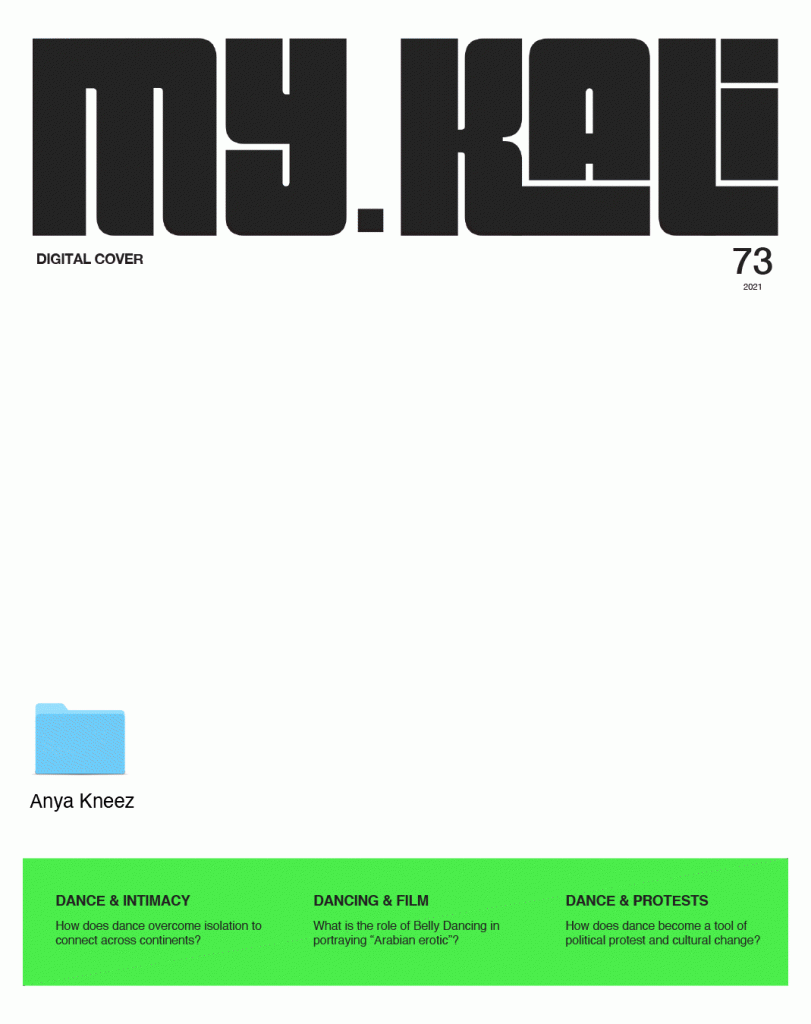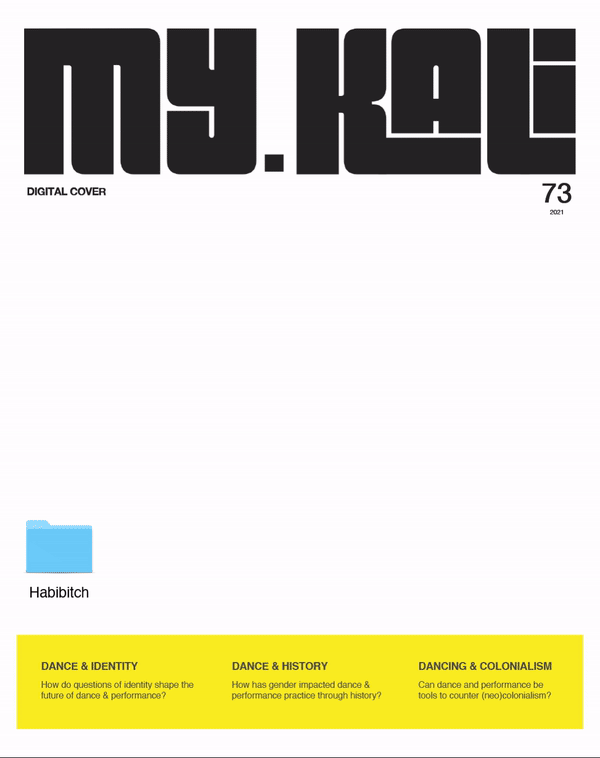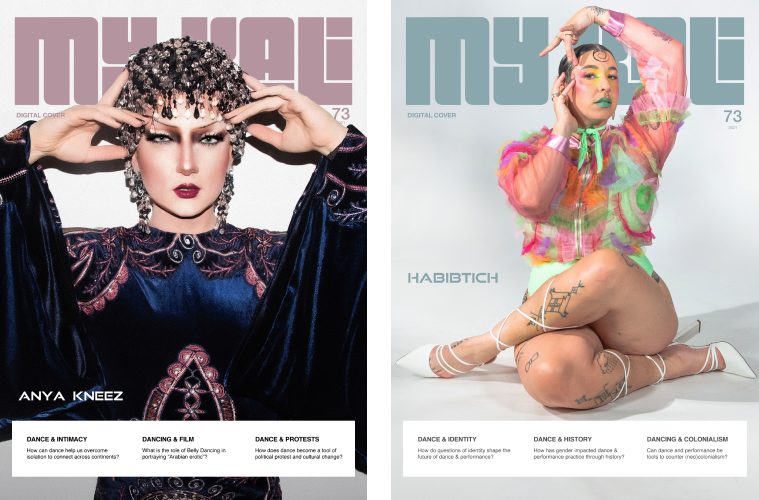Inspired by those who attended My.Kali’s queer digital parties during quarantine, we created an issue around dance, performance, and theater. These forms are not only practices of movement and expression; they are also a performance of strength, subversion of social norms, and reclamation of space and intimacy.
We also aim to push back against the stiffness and rigidity that often comes with how we talk about dance, what “kinds” of people are allowed to dance, and where it is deemed appropriate. We see this in the case of contemporary Egypt, for example, where foreign women can dance without criticism, but an Egyptian woman can be imprisoned for posting a TikTok video of herself dancing in her bedroom.
There are a number of paradoxes and hypocrisies in how dance and performance are understood. Our societies have adopted an Orientalist view of belly dancing that distills it into something that is sexual, pornographic, and aimed only to seduce (but there is nothing wrong with that!), and frames Western dance as respectable, elegant, and sophisticated. Further, when the Western woman learns belly dancing, she is often seen as more chique and sophisticated, her social image elevated.

On the cover Drag Artist Anya Kneez. Photographer: Mathew Pandolfe
Styling / Hair / Makeup: Anya Kneez
Design / Stylist Assistant: Alex Khalifa / Hisham Dawoud / Glossy Bohemond
Cover design by Atef Daglees
Cover video design by Alaa Saadi
Anya’s cover story by Khaled A.
We feature Habibitch, a non-binary femme boss who aims to decolonize the dancefloor, and Anya Kneez, pioneer drag queen who helped build the scene in Beirut and used her influence to support the queer community following the 2020 explosion. These performance artists place questions of identity and politics at the center of their work, and model powerful ways to engage their communities and beyond.

On the cover body artist and dancer Habibitch.
Photographs: Teresa Suárez
Interview by Ayyur
Styled & fashion by Morgane Bellefet
MUA Lila Drogo and MUA assistant Camille Gautier
Cover design by Atef Daglees
Behind the scenes photos By Camille Léage
Behind the scenes video Nada Serhan
Special thanks to Atelier Des Artistes en Exil for having us, and for Maral Bolouri assisting us.
This article is part of the “Ya Leil Ya Ein” issue
We also explore the power of dance to maintain bonds of friendship and heal words, even in virtual space; the significance of dancing behind closed doors, particularly for women and the members of the queer community; depictions of belly dancing in film; and Ruby’s embodiment of the belly dancing costume in her 2003 music video, taking it from private venues to the street, owning it and using it as a point of pride.
Ya Leil Ya Eyein.

